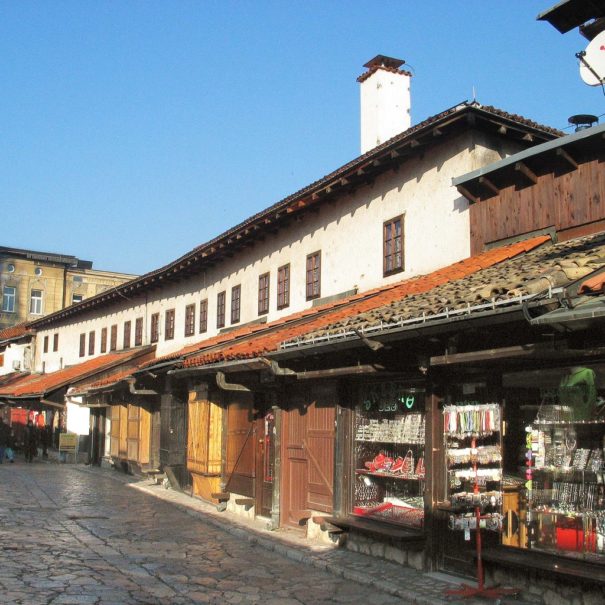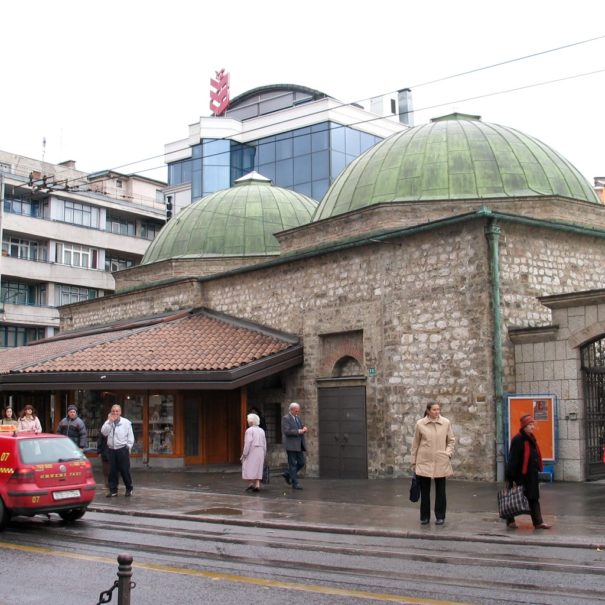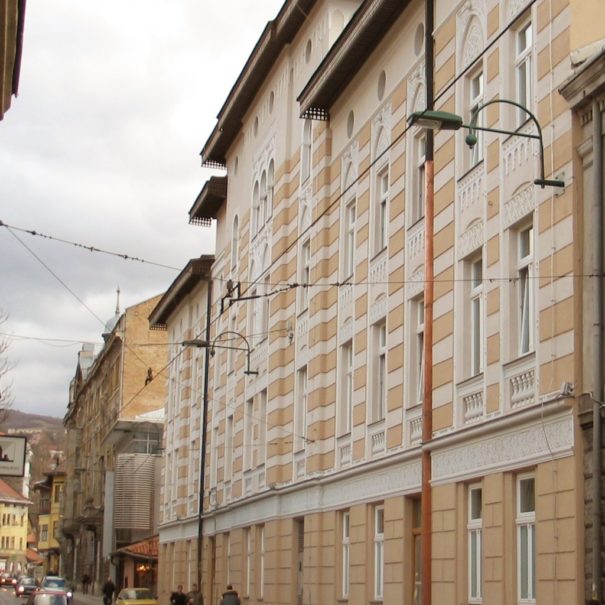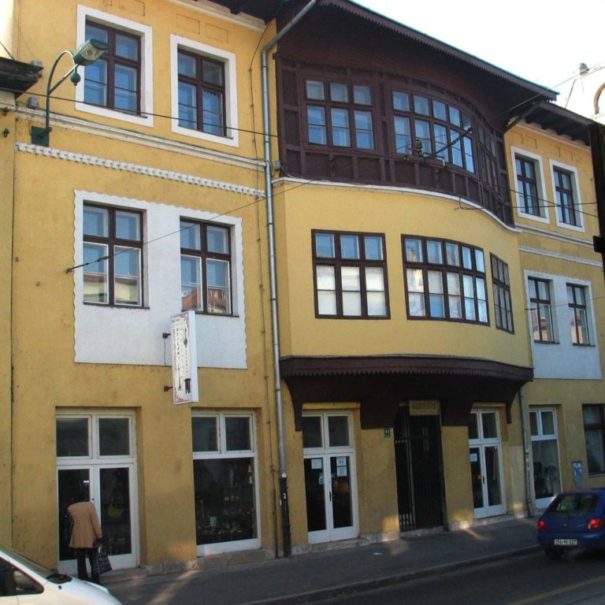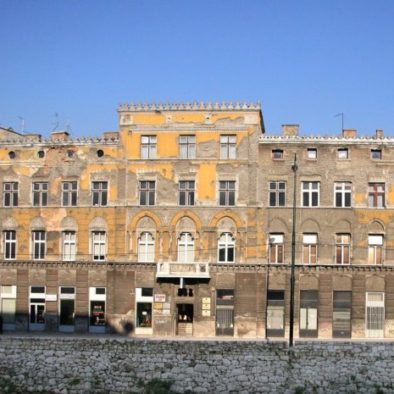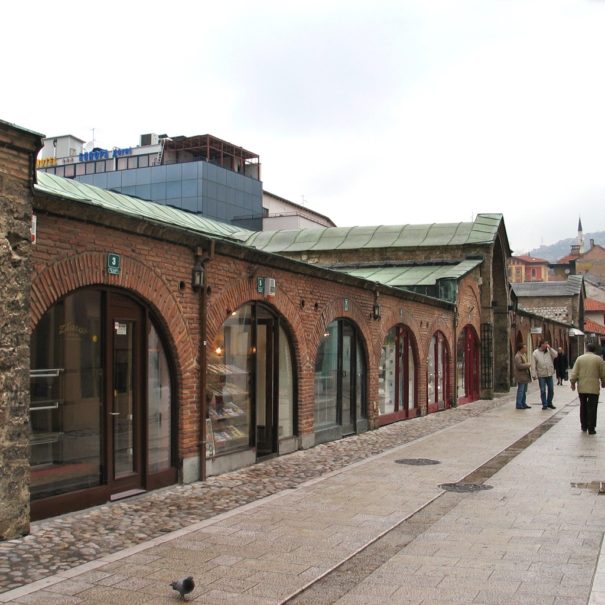Turbes
Gazi Husrev-bey
During his life Ghazi Husrev-bey had built two turbets (domed burial sites – mausoleums) which belong to typical examples of closed mausoleums which were being built in the 16th century above the graves of famous people. The dimensions of this structure reveal the influence and the rank of the deceased.
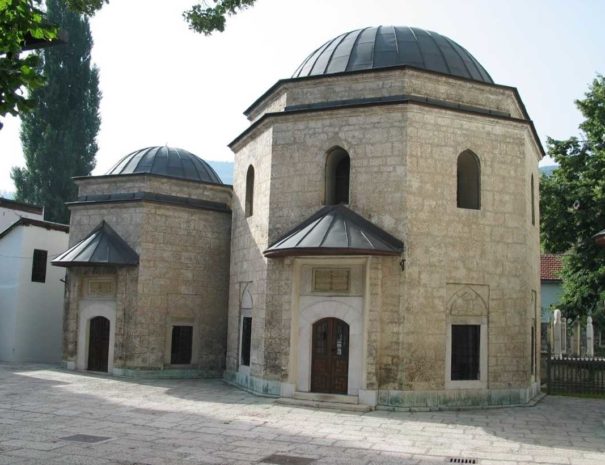
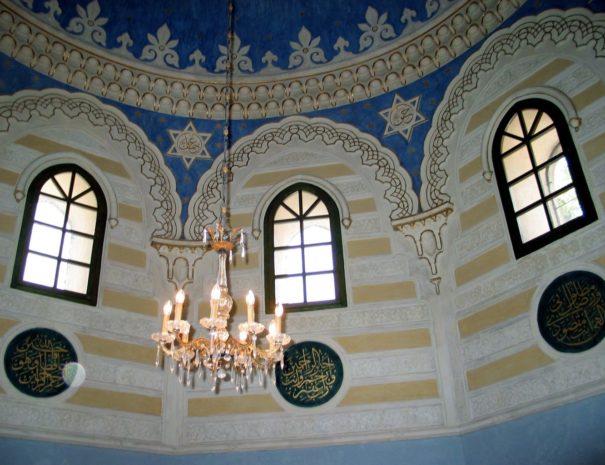
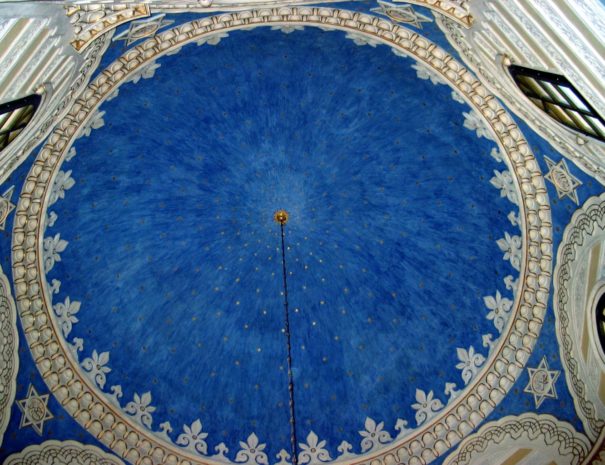


Gazi Husrev-begovo turbe
The turbets were restored in 1895 during the Austro-Hungarian administration and their interiors were decorated with the caligraphically written verses from the Qur’an. In the restoration that was performed in 2002 the interior was restored in accordance with the conditions from 1895. In the middle of the great octagon turbet lies Ghazi’s sarcophagus covered with a gold-embroided cover. Ghazi Husrev-bey was born in 1480 in Serez (Aegean Macedonia) where his father served as a sanjak-bey – governor. His father, Ferhat-bey Hercegović was a native of Trebinje, while his mother was a Turkish princess Seljukia, a daughter of Sultan Bajazid II, so that Ghazi Husrev-bey is of Bosnian descent. In the Dubrovnik archive from 15 April 1483 the following is written: “Prima pars est, de acceptando donum perperorum cca. 55, factum per minus consilium Radivoy, affini Perchat-beghi, generi imperatoris.” (The inhabitants of Dubrovnik present Radivoja, who is a cousin of Ferhat-bey – an imperial son-in law, with 55 perpers.)”
Ghazi Husrev-bey’s coming to the seat of the Bosnian sanjak-bey in 1521 (with the exception of two short periods of absence, Ghazi Husrev-bey remained in Bosnia until his death in 1541) brought rapid economic progress to the city of Sarajevo. Ghazi Husrev-bey was an individual who embodied the virtues of a talented soldier and citizen; an emir (leader), a humanist and a builder. The title of ghazi or a hero, which was given to the outstanding Turkish soldiers and heroes for their military successes and bravery, he earned before his arrival in Bosnia. At the same time he was a grateful son of his homeland to which he gave his heart and his fortune.
With his testaments from 1531 and 1537, Ghazi Husrev-bey had endowed his entire fortune for the mosque, haniqah, imare (the soup kitchen), musafirhana, madrasa and the library. In a period of twenty years during which, as a Turkish governor, he governed Bosnia, Ghazi Husrev-bey had laid strong foundations to the future city of Sarajevo, the capital of Bosnia and Herzegovina, which shortly following his death developed into the biggest city of the Ottoman Europe with the population of approximately 50,000.
Ghazi Husrev-bey’s great achievements are truly impressive in their scope and purpose, for his endowments left their mark on the city of Sarajevo and stimulated the growth of this city and other regions for centuries.
His achievements include a magnificent mosque erected for the glory of the One in Whose love he lived and worked. Across the street he built his famous madrasa which, then and for a long time after, remained a unique and an exceptional school in the Balkans. At the same time Ghazi Husrev-bey built the famous library, which houses one of the richest collections of Near Eastern writings. Concurrently, all around Sarajevo of that time, emerging were other Husrev-bey’s institutions and endowments of religious, educational, social and sanitary character. The great builder never overlooked the need for the accessibility of drinking water and he built a water supply system and brought in water from a spring seven kilometres from Sarajevo, channelling it into 40 public fountains. This was one of the first water supply systems in Europe of that time.
Also impressive is Ghazi Husrev-bey’s Hamam from the first half of the 16th century, which is the last hamam in this city that has been preserved in its entirety. The hamam had parallel facilities and in each it had several sections; main entrances with the waiting rooms (the so-called shadirwans, under the great domes), rooms for bathing and sweating, spaces for keeping up fire and heating of water, and floor heating by using warm air.
Ghazi Husrev-bey went even further. He was well aware that economy is a lifeline of any city and region. The better the economy the quicker will the city blossom and develop. This is why Ghazi Husrev-bey kept investing into the city of Sarajevo. He built the famous Sarajevo Tashlihan – a great caravanserai (a meeting place of the rich merchant caravans which had been coming to this city from the East and the West for centuries). Ghazi Husrev-bey also built a bezistan (a roofed over market that housed the widest variety of textiles); numerous shops in which hundreds of skilled hands forged, sewed, did embroidery and traded. These things transformed Sarajevo into a noisy merchant and craft centre through which rich merchant caravans passed every day, bringing in and carrying away goods, raw material and finished products.
However, it seemed that Ghazi Husrev-bey still wasn’t satisfied. In his famous madrasa, aside from religious subjects, one could freely discuss philosophy, poetry and ethics. Owing to this, seemingly unknown individuals read, studied and transcribed the most famous philosophical and other works. Today, their transcripts, journals and poetry can be found in Ghazi Husrev-bey’s Library.
Such was the old Sarajevo in which Ghazi Husrev-bey laid the economic and spiritual foundations. A man of such intellect and noble spirit could not be any different towards the adherents of other faiths. His tolerance and his understanding reflected in his deeds.
The old Orthodox church in Sarajevo, only a few hundred steps from his monumental mosque, was built during his time.
At the same time the Franciscan monasteries near Sarajevo, in Visoko and Fojnica, were being restored, and in the Sarajevo neighbourhood of Latinluk, which is also in the immediate vicinity of Ghazi Husrev-bey’s Mosque, stands a Catholic place of worship.
Above the entrance into the Ghazi Husrev-bey’s Turbe there is a stone tablet 45 X 85 cm in size, on which an inscription in Arabic language is engraved.
The inscription is engraved into six elliptical spaces, edged with thick lines.
The year of Ghazi Husrev-bey’s death is expressed in ebdžed (calculated using the numerical value of the Arabic letters) in the last half-verse. By adding the numerical values of the letters in the last half-verse we get the year 948 according to Hijra, which corresponds to year 1541-42 AD, and which is the year of Ghazi Husrev-bey’s death.
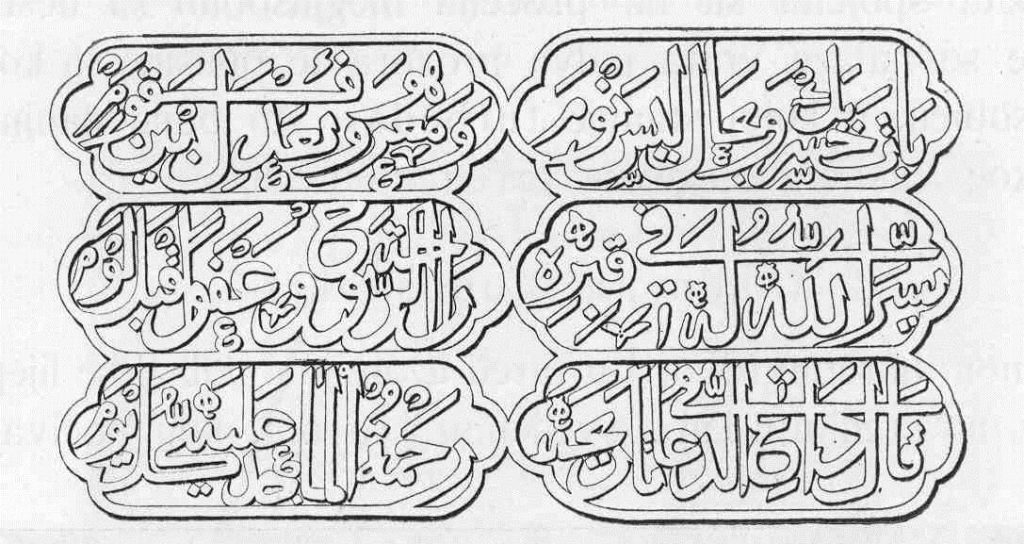

“Husrev-bey was overtaken by darkness in a condition unlike a dream,
Among the people he is known for his righteousness.
May God make his stay in the grave a light one
And grant peace to his soul and forgiveness (of sins).
In his prayer the supplicant uttered for him a chronogram:
May God have mercy on his soul every day.”
Interior of Gazi Husrev-bey's turbe
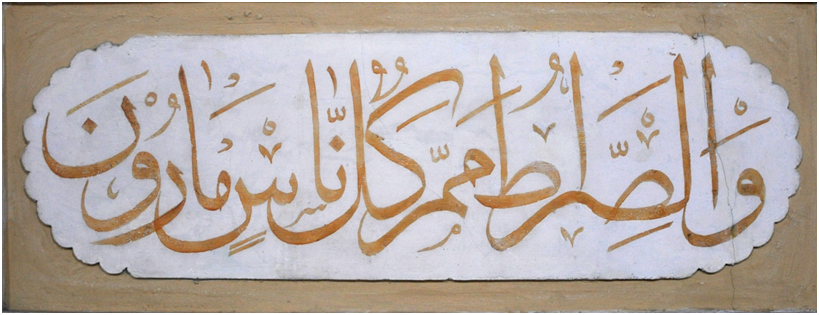

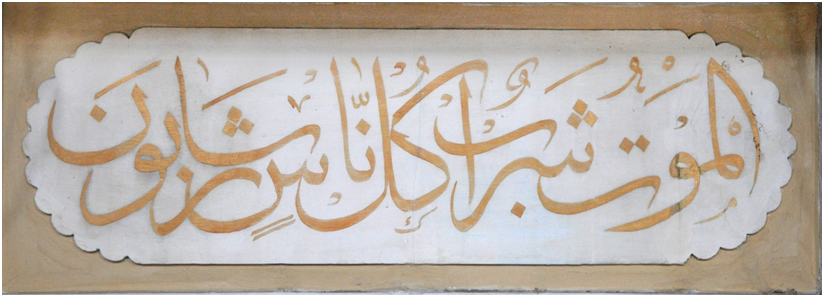

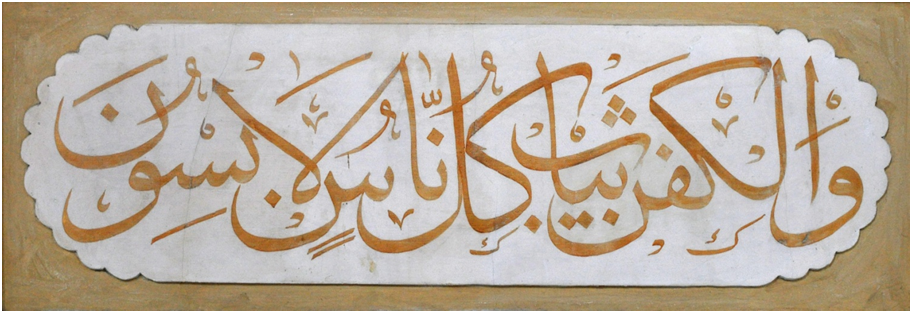

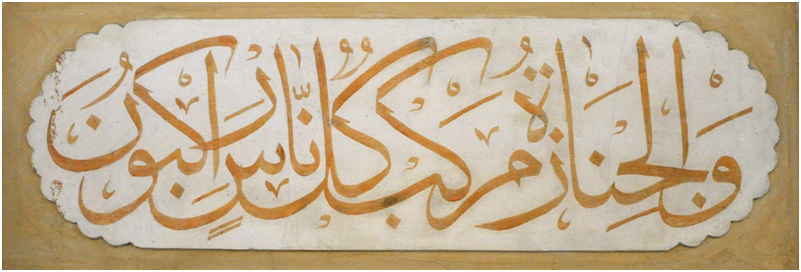

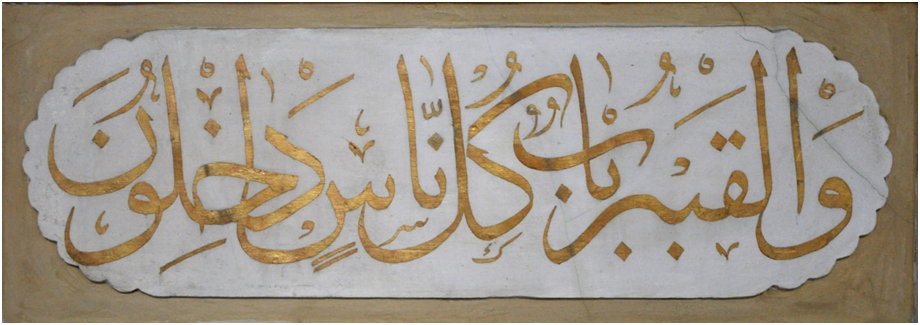



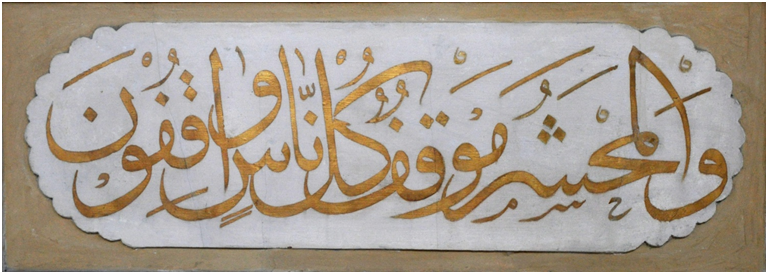

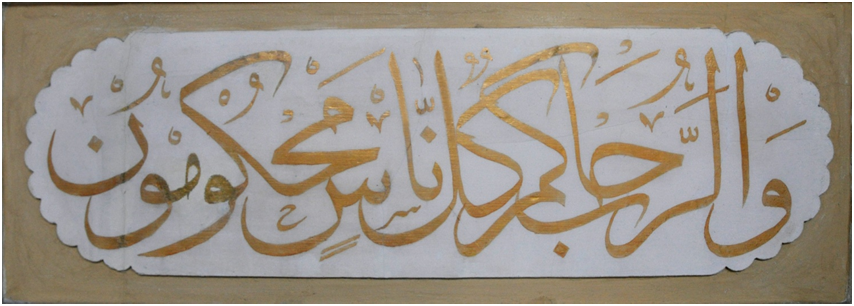

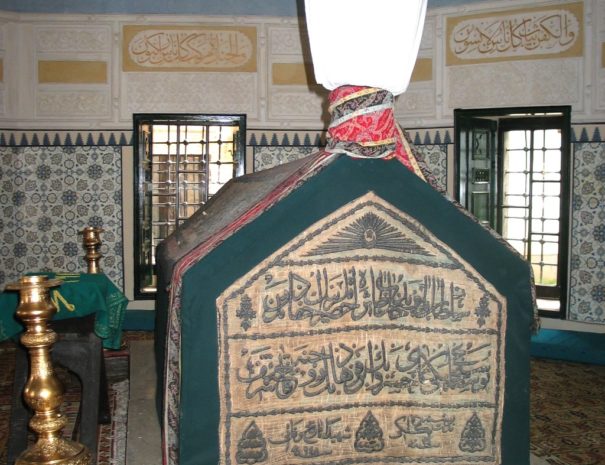

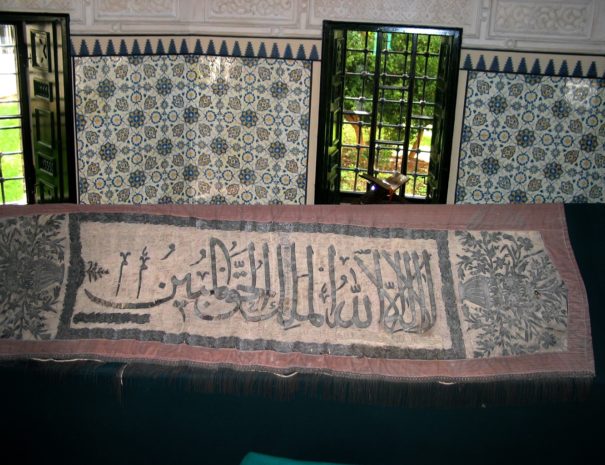

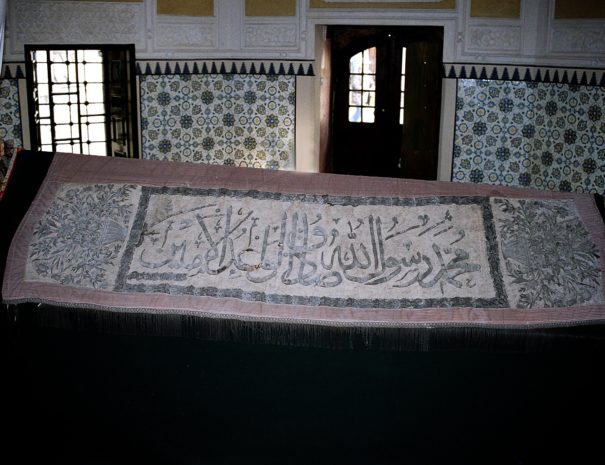







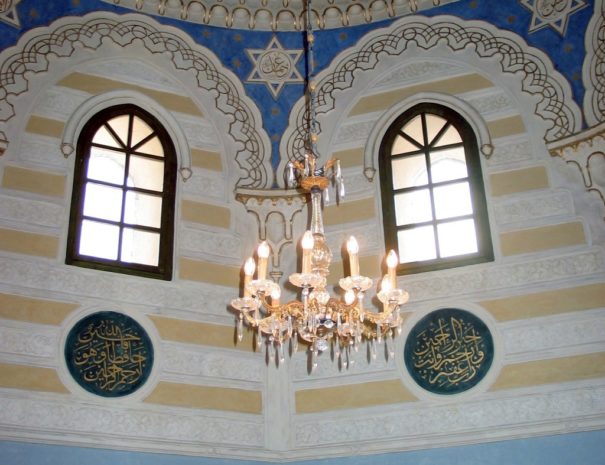

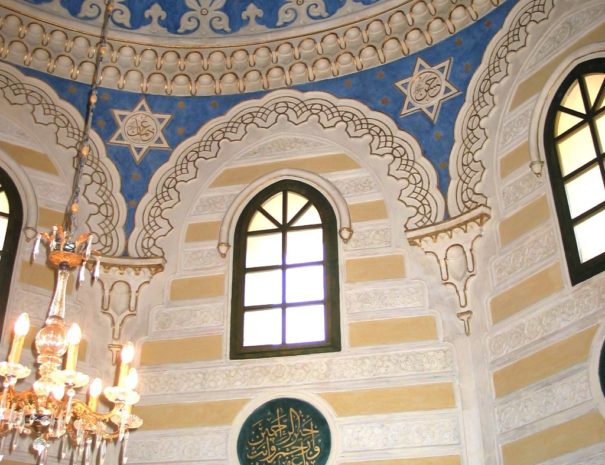

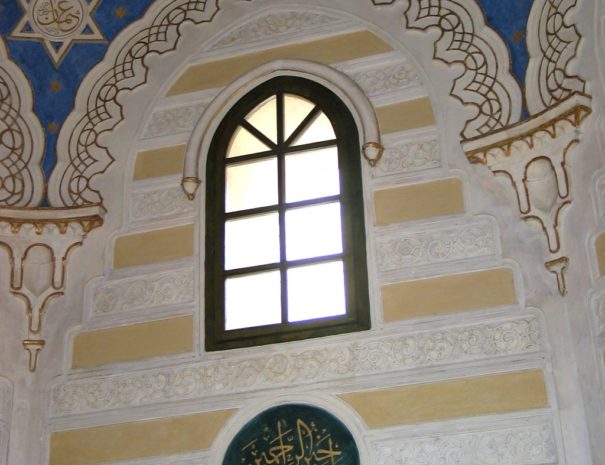

Murat-bey's turbe
Next to his turbe Ghazi Husrev-bey built a smaller turbe of hexagonal shape for Murat-bey Tardić. Murat-bey was a freed prisoner of war who embraced Islam. He was freed in accordance with the wishes of Ghazi Husrev-bey who appointed him his duke and ćehaja (deputy). Based on a chronicle which describes the military Dalmatia from 1536 we find out the following: This Murat-bey, who was later decorated in a desperate battle near Gorjan, was, according to Ištvanfy, from Šibenik, and in his youth he came into Turkish slavery and as a slave came to Ghazi Husrev-bey court where in time he was appointed duke… We have determined, from the above text, that this statement of his descent is trustworthy. We were also able to determine that Murat-bey had a brother in Šibenik, a priest by the name of Jurje Tardić, and this brother of his, as we were able to understand from a report by a Šibenik prince dated 30 May 1526, was a canon of a chapter house and had remained on brotherly terms with his brother Murat, at that time a gate-keeper of Ghazi Husrev-bey, since that same spring he was in Sarajevo paying him a visit, and it was his intention, as we had come to understand from that same report, to visit his brother again. In 1528 Murat-bey conquered the fortified city of Jajce and in 1537 he did the same with the impregnable city of Klis and the entire Military Border in Croatia and Slavonia, when from the newly conquered territory the Klis sanjak was formed. And that’s how one of the most important strategic places on the coast of Adriatic Sea, tough (unconquerable) city of Klis, fell under Ottoman rule and later became the seat of the newly formed Klis sanjak in which, at the suggestion of Ghazi Husrev-bey, Murat-bey was appointed its first sanjak-bey and from that time was given the name of Gazi Murat, and to reward his bravery the Sultan himself, according to the historian Muvekkit, granted him the zijamet and Murat was given the title of bey. After he became well known in the wars against the Venetian Republic and Austria, Murat-bey died in 1546 as the Sanjak-bey of Slavonia. His body was moved to Sarajevo and placed inside the smaller turbe. According to the decrees from Ghazi Husrev-bey’s testaments Murat-bey was appointed the first Mutawalli (Administrator) of Ghazi Husrev-bey’s Waqf. In accordance with the same decrees each new Mutawalli is chosen from among the descendants of Murat-bey. Above the entrance into Murat-bey’s turbe is a stone table, 30 X 85 cm in size, with an inscription in Turkish language. The inscription is written in four elliptical spaces, edged by lines. The year of the chronogram is expressed in ebdžed with the words “Cani Murade rahmet”, whose numerical value is equal to 952, which is the year Murat-bey died, according to hijra, and which corresponds to year 1545/46 AD.
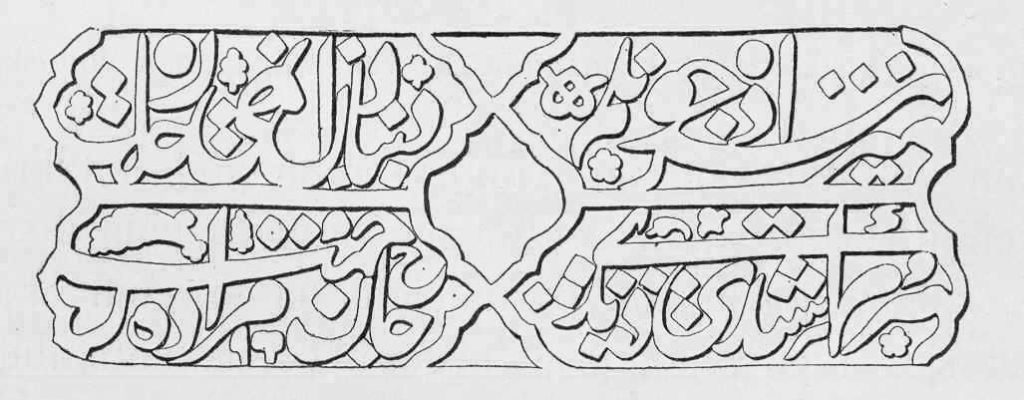

Interior of Murat-bey's turbe
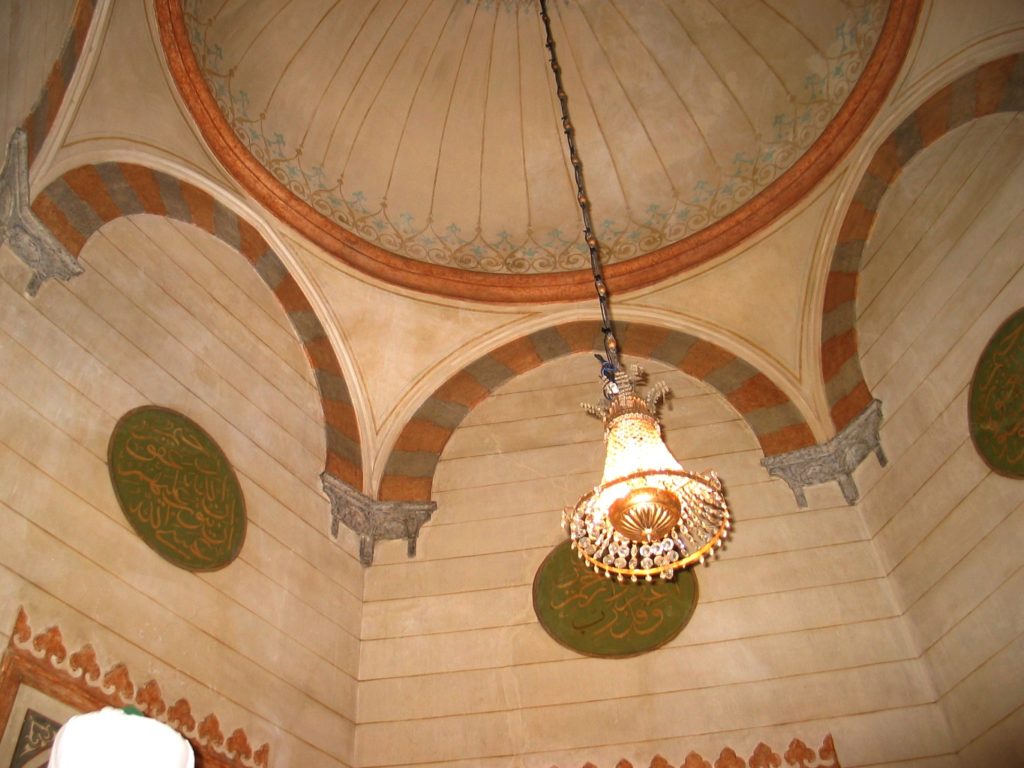

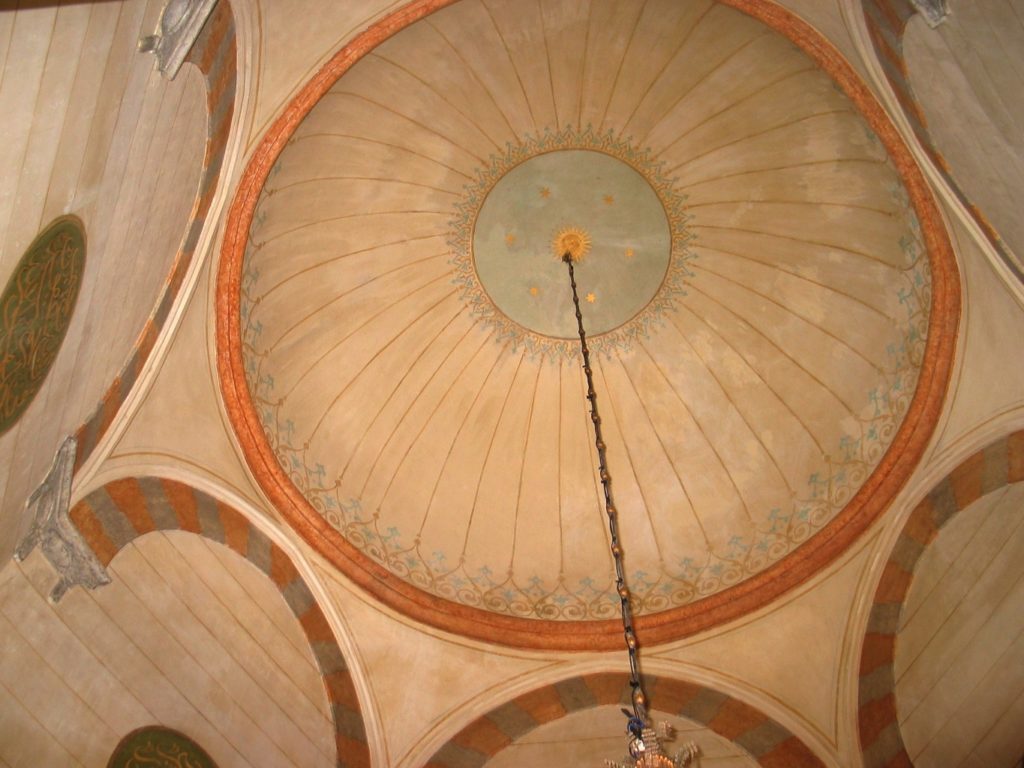

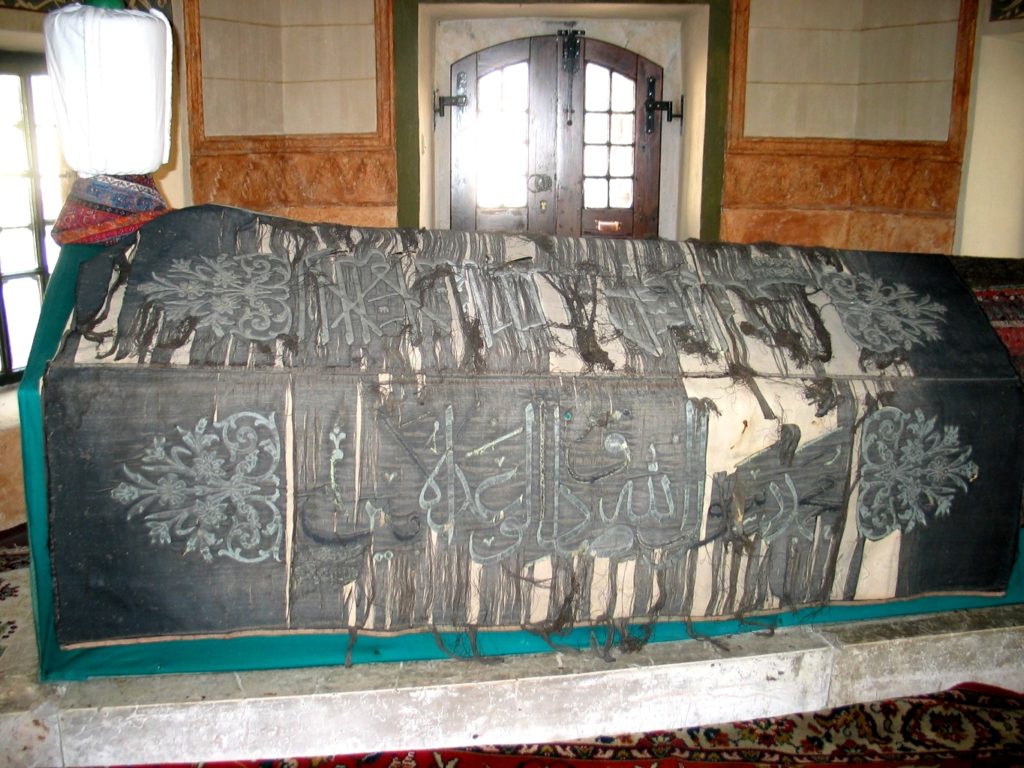

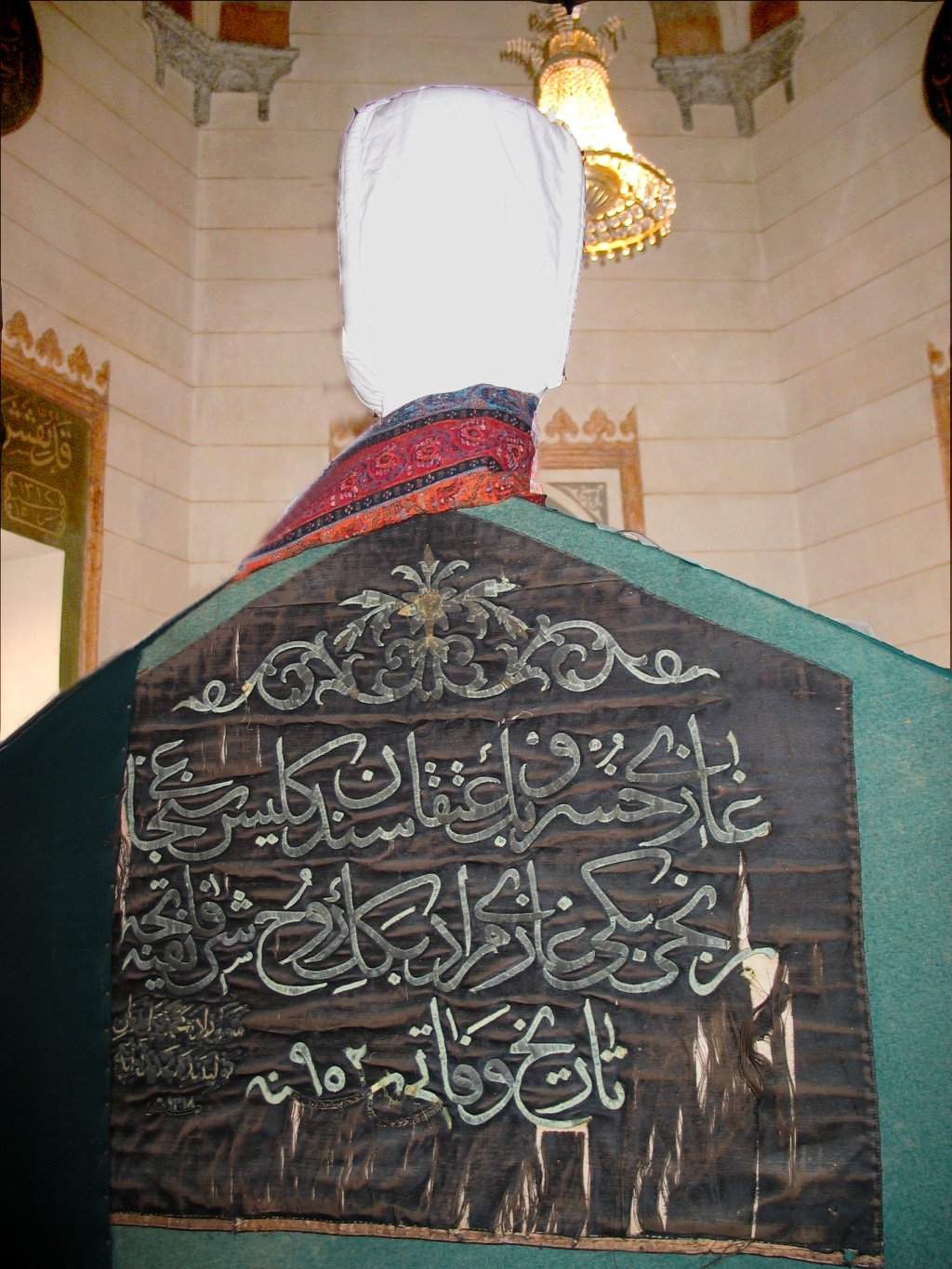

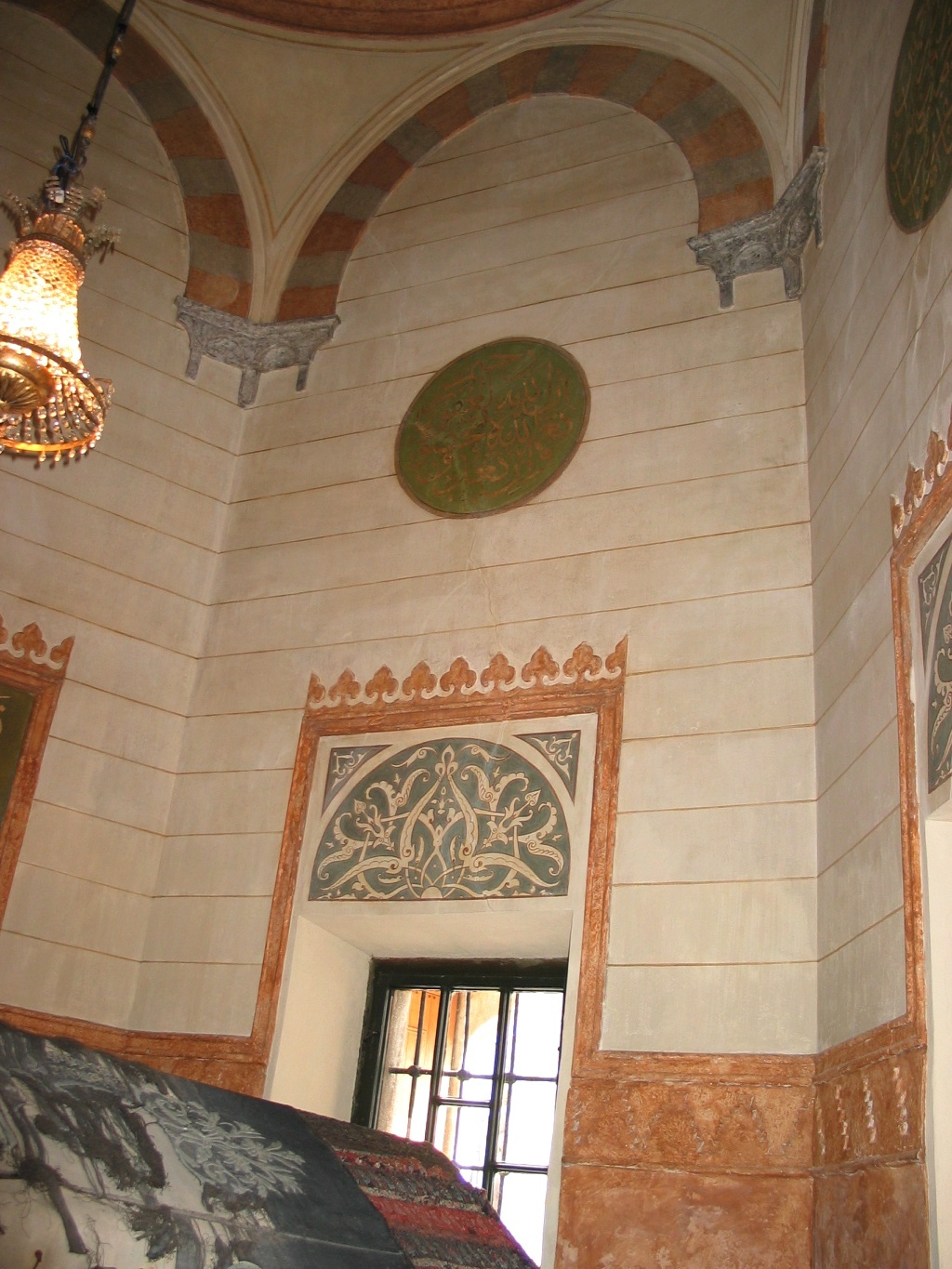

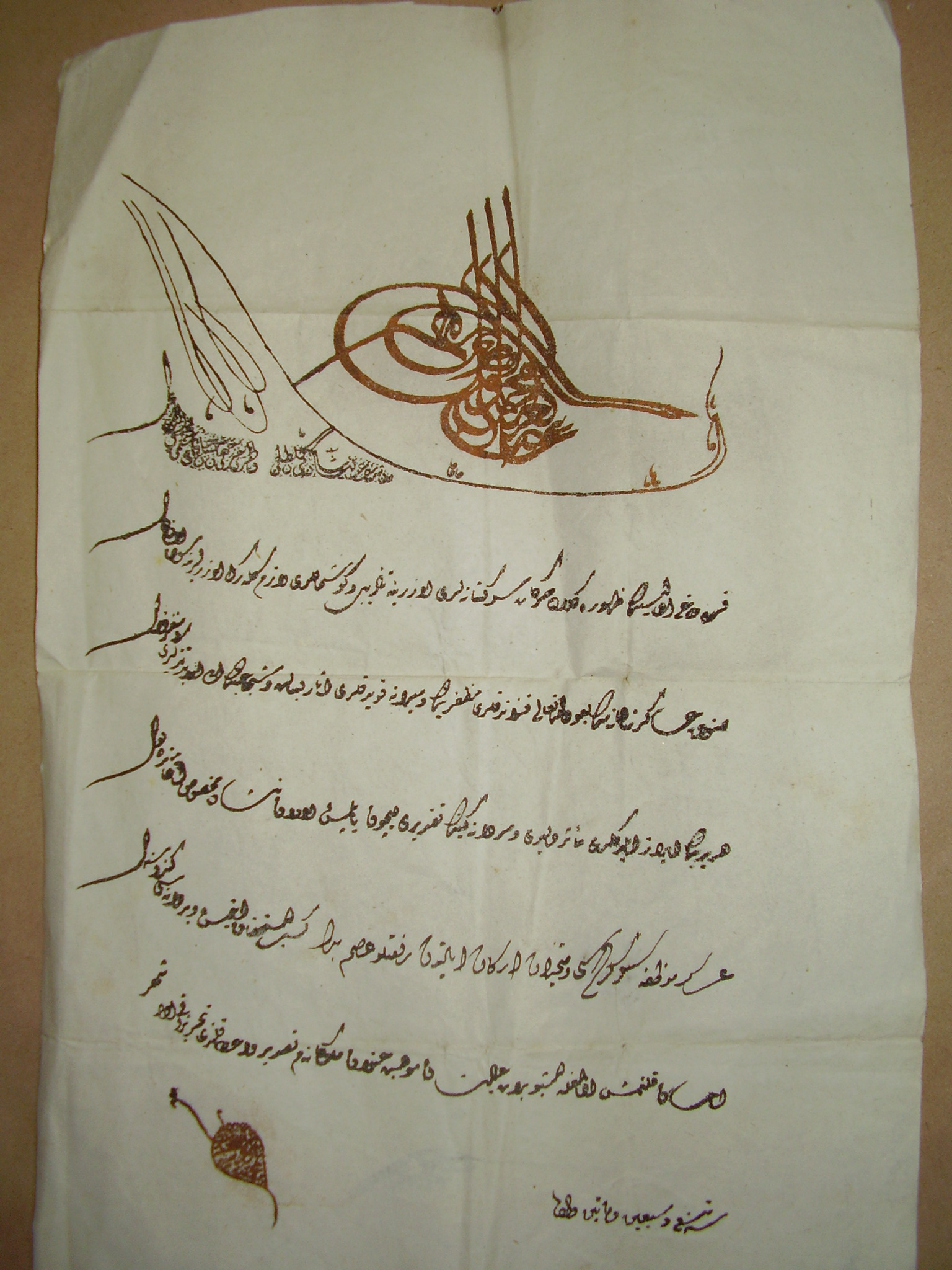

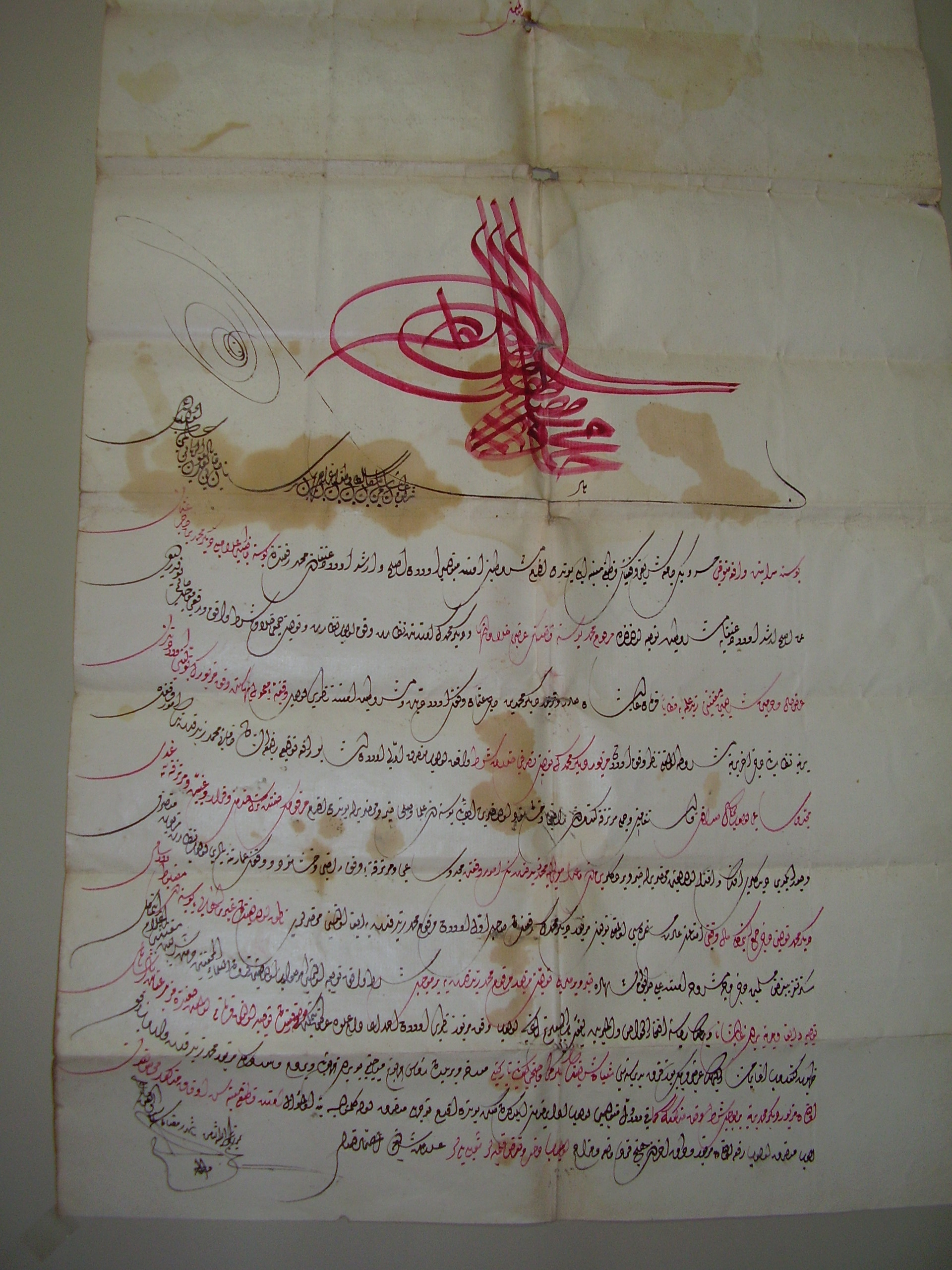

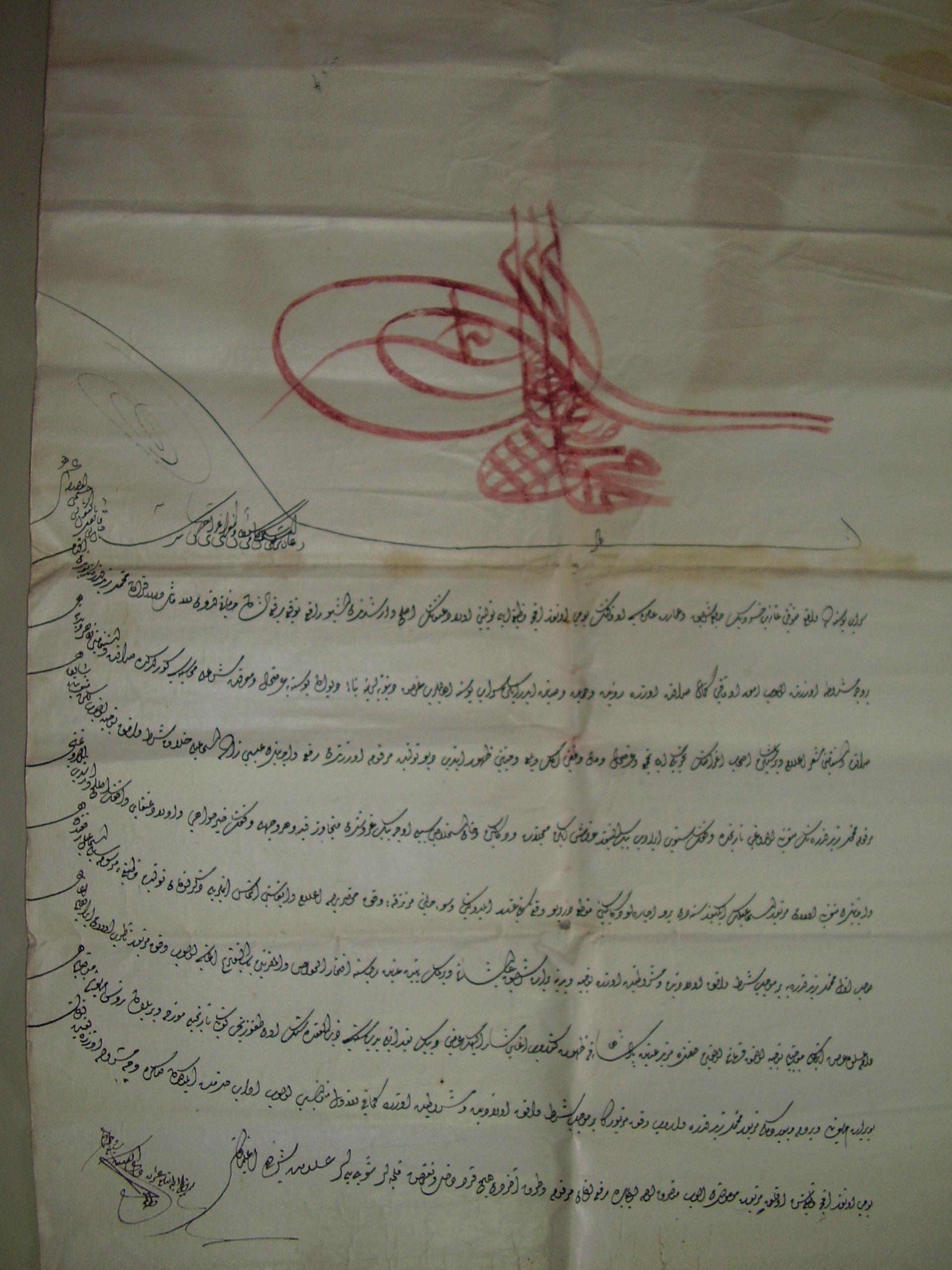

More Waqf Buildings
Other buildings of Ghazi Husrev-beys Waqf from Ottoman and Austro-hungarian period.
